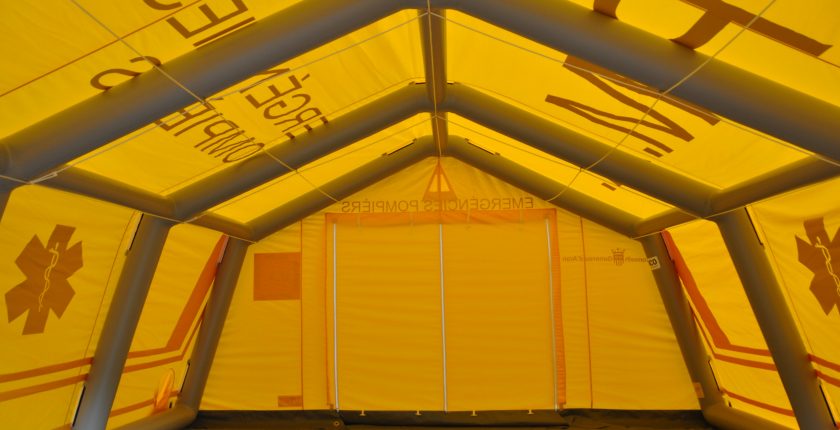Shelter Provides Beyond Survival – How Shelter Facilitates Long-term Recovery from Natural Disasters
Haiti Earthquake and Cyclone in 2021
Haiti has recently experienced 2 major natural disasters which have caused widespread destruction and affected millions of lives. A magnitude 7.2 earthquake struck the southern region of Nippes on 14th August 2021, the tremors of which were felt throughout the nation. This was closely followed by Tropical Storm Grace which swept over Haiti 2 days after the devastating earthquake, leading to flooding and landslides.
The earthquake has exacted a devastating toll on life. Reports issued by the Haitian Civil Protection last week report the death toll at over 2,200. It currently stands that with more than 12,200 injured and 53,000 homes destroyed, an estimated 40% of the population now require emergency humanitarian aid (Reliefweb 2021). Storm Grace then hampered efforts to supply this much-needed aid. Sanitation and safe drinking water were already prioritised post-earthquake yet flooding caused by storm Grace has made providing this a challenging task. Additionally, landslides have disrupted access to more remote regions of Haiti where shelter and aid are now essential.
The International Humanitarian Response so far
The UN World Food Program (WFP) delivered 100 metric tons of contingency food supplies, able to meet the food needs of 7,550 people for one month. The WFP, in conjunction with USAID, is now working on transporting a further 730 metric tons, enough to feed 62,000 for a month. Meanwhile, UNICEF has imported nutrition, water, and hygiene commodities meeting the needs of 23,330 households for 3 months (USAID, 2021). These operations work alongside a vast range of NGOs who also work in the region. NGOs such as the Red Cross, Médecins Sans Frontières, and ShelterBox are providing resources as well as staff on the ground to assist with the life-saving rescue, medical and humanitarian operations.
Providing Shelter facilitates Long-term Recovery
With so many homes destroyed or no longer safe to live in, shelter becomes one of the primary concerns for persons and families impacted by natural disasters. A place to live in is an essential contributor to survival, particularly for people who are exposed to hard climatic conditions. Such is the case for Haiti which is situated along the Hurricane belt where storms are a regular occurrence. Shelter not only offers continuous protection from the weather and adverse temperatures, but it also helps against ill health and provides security for persons and possessions.
Yet beyond short-term survival needs, shelter also addresses mid-and long-term issues facing people and families in disaster-hit areas. Having access to a stable, safe, and clean temporary home has a huge influence on a person or family’s ability to recover post-disaster. For example; losing a house can exact psychological and physical stress symptoms resulting in mental health issues such as Post Traumatic Stress Disorder or anxiety. In such cases, the security of a shelter can protect against further stresses which could exacerbate mental health issues.
Having shelter can aid in creating a small sense of normalcy which can help against feelings of stress and anxiety. As such, shelters can become a regular place to be with family and to stay connected with the community. This then helps maintain the strength of the social fabric which can support those suffering from physical or psychological ill-health. A strong social fabric, facilitated by the security of a shelter, can also support other aspects of recovery. Children are more likely to be able to go back to school and adults are more able to find a source of income when there is a sense of security. Educations and household economics are vital for creating resilient and recovered societies for the future, having access to a shelter then goes beyond the preservation of life. Small and temporary as these aspects of what shelter provides may seem, they become key parts that help support people and families to start the process of reconstructing society.
Essentially, a shelter becomes a place from which the process of rebuilding lives becomes possible.
Bibliography
ReliefWeb,. (25th August 2021) Haiti: Flash Appeal – Earthquake (August 2021), https://reliefweb.int/report/haiti/haiti-flash-appeal-earthquake-august-2021
BBC,. (17th August 2021) Haiti earthquake: Tropical Storm Grace hampers rescue https://www.bbc.co.uk/news/world-latin-america-58222888
USAID,. (22nd August 2021) Haiti – Earthquake, https://reliefweb.int/sites/reliefweb.int/files/resources/2021_08_22-USAID-BHA-Haiti-Earthquake-Fact-Sheet-6.pdfUSAID,. (22nd August 2021) Haiti – Earthquake, https://reliefweb.int/sites/reliefweb.int/files/resources/2021_08_22-USAID-BHA-Haiti-Earthquake-Fact-Sheet-6.pdf
IFRC,. (2021) Shelter and settlements, https://www.ifrc.org/en/what-we-do/disaster-management/responding/services-for-the-disaster-affected/shelter-and-settlement/what-we-do-in-shelter/
ShelterBox,. (2021) How we work, https://www.shelterbox.org/about/how-we-work/
Welsh, T,. (16th August 2021) Tropical cyclone brings challenges for Haiti earthquake response, https://www.devex.com/news/tropical-cyclone-brings-challenges-for-haiti-earthquake-response-100613

